A Kruger Adventure: 24 hours at Berg-en-Dal Rest Camp
As the sun brushed the long grass alongside the road, the great boulder up ahead twitched.
18-December-2022
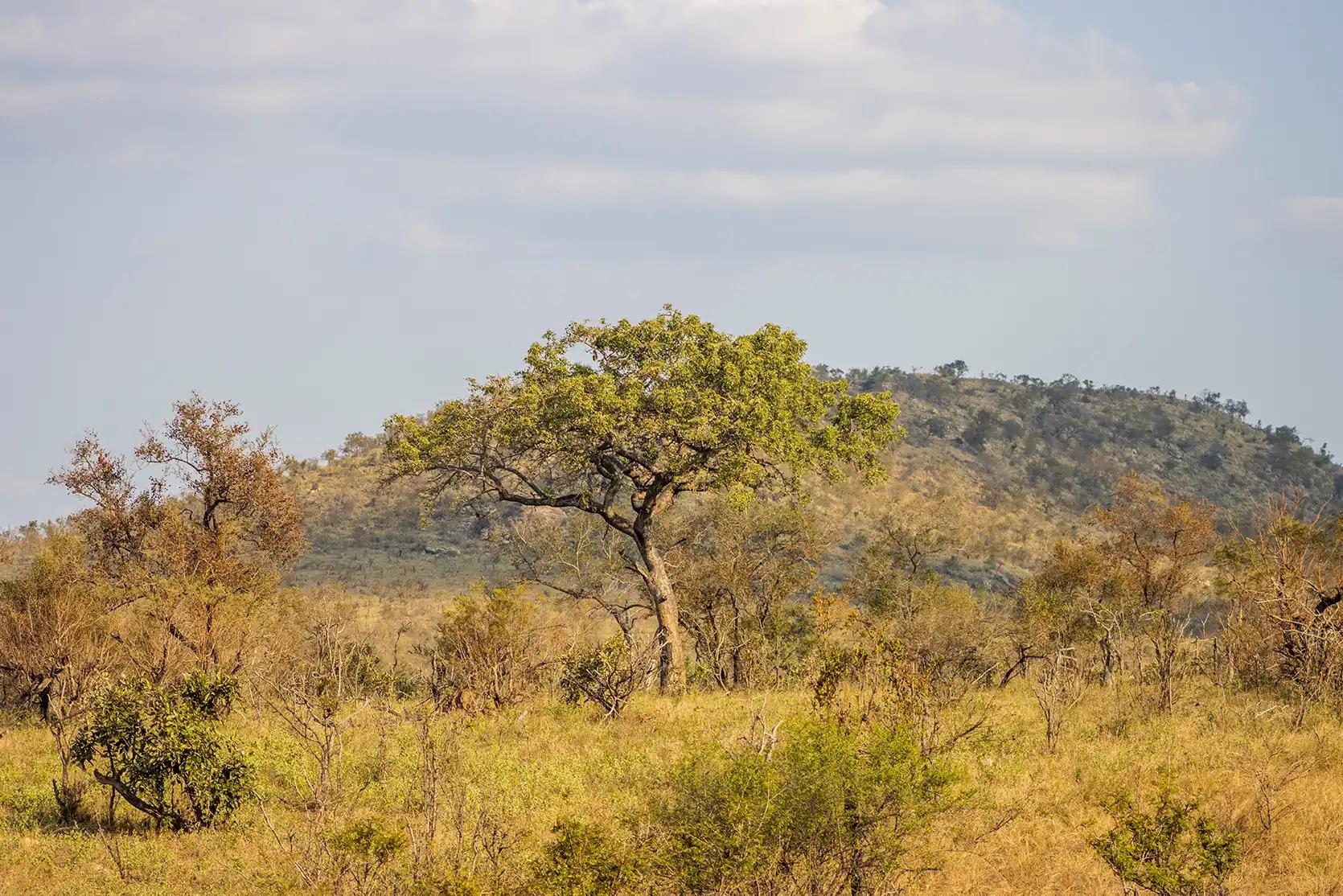
Our last full day in the Kruger, we arose early, packed the car once more and said goodbye to Satara Rest Camp shortly after the gates opened. We were heading south, to Berg-en-Dal, one of the parks newer rest camps. We'd planned out the route the night before, deciding to stop at Tshokwane picnic spot, Sukusa and Afsaal Trader's Rest - another picnic spot. Depending on how our timing went, we'd decided to venture slightly off of the main paths and do a few small detours.
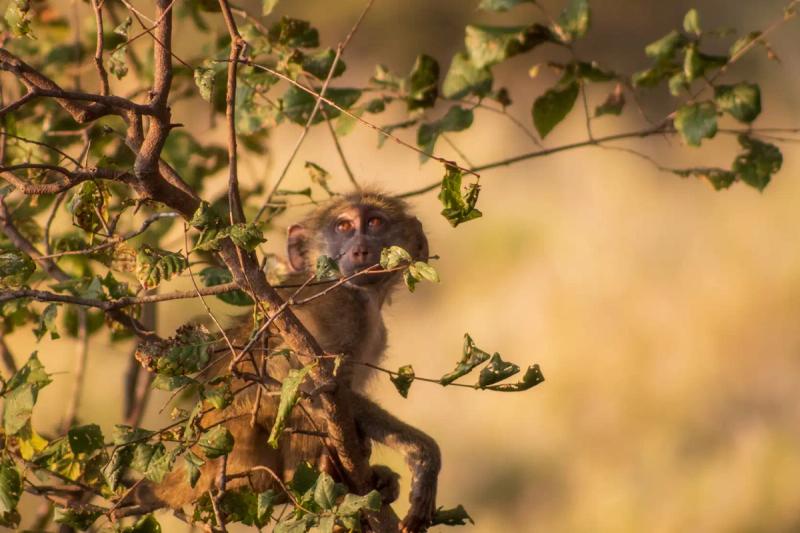
Within the first hour of our drive, we spotted - not a rare animal - but our German friends from the previous night's safari. They were on a private game drive and we decided to follow them for the most part, stopping whenever they appeared to have made another sighting (which was fairly often) and deciding to continue when we felt like it. With them as our extra eyes, we saw a few extra jackals and plenty of vultures.
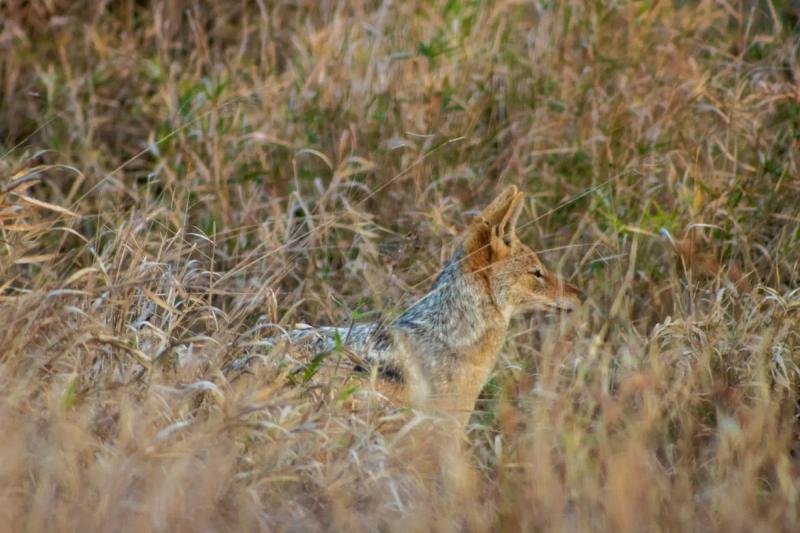
We made a short detour to see the park's Southernmost Baobab. Sadly, not as impressive as the trees I'd seen in Limpopo, maybe, because this one had no fruit and we weren't able to get out and explore it on foot. From there we took another detour, this time the S86 and were rewarded with two honey badgers running, somewhat frantically, on the road in front of us before darting into the bush.
Reaching our first pitstop, Tshokwane, we had a quick coffee and breakfast, keeping a watchful eye on the monkeys and their thieving hands. On our way to Sukusa, we made another short detour. This time to Leeupan in the hopes that the dam would live up to its name. It didn't. Instead we saw a large herd of elephants frolicking in the water. We watched them for a few minutes, before they took off, noses in the air, and little ones at their sides.
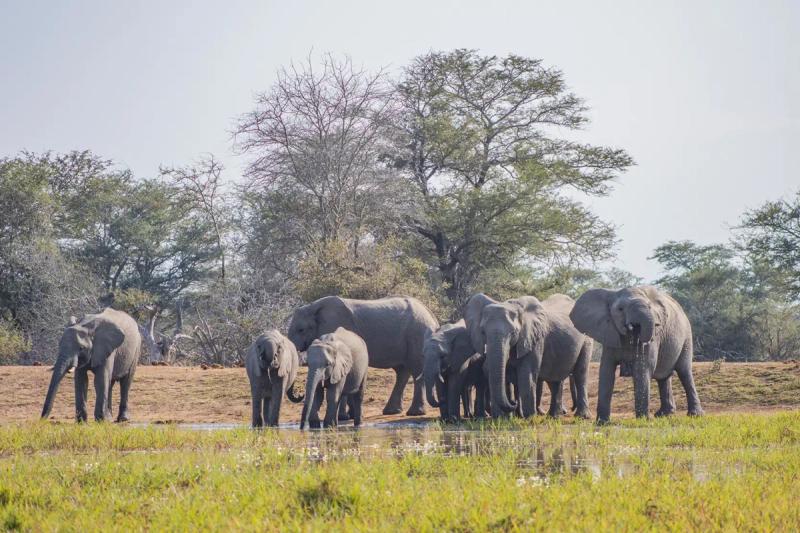
After our toilet break at Afsaal Trader's Rest, one of the busiest picnic spots we'd seen on our entire trip, we veered off of the H3 and took the S118 to S121 to see if anything would catch our eye. Unfortunately, we didn't see anything overly exciting other than a hyena running in the road. No rhinos or wild dogs even though we were now in their territory.
We made it to Berg-en-Dal shortly before 3pm, checked in and booked a sunrise game drive for our last morning in the park.
Berg-en-Dal
Facilities
Unlike many of the other rest camps, Berg-en-Dal sits on the Drakensberg escarpment. This means that Big 5 sightings occur in the hills instead of out in the open savannah plains. Instead of rondavels, you'll find modern brick chalets and bungalows giving the camp a more luxurious feel. As with the other camps, you'll fine a gas station, swimming pool, restaurant and shop. There's also a trail encompassing the camp called the Rhino Walk trail.
Our experience
We arrived at Berg-en-Dal, checked in at the front desk and booked one last game drive for the following morning. The camp was larger than Satara but not by much. There were monkeys and small grysbok roaming around as we drove to our chalet. We unpacked, had a makeshift lunch and then set off for a quick drive to the nearby dam to see what we could find before returning before the gates closed.
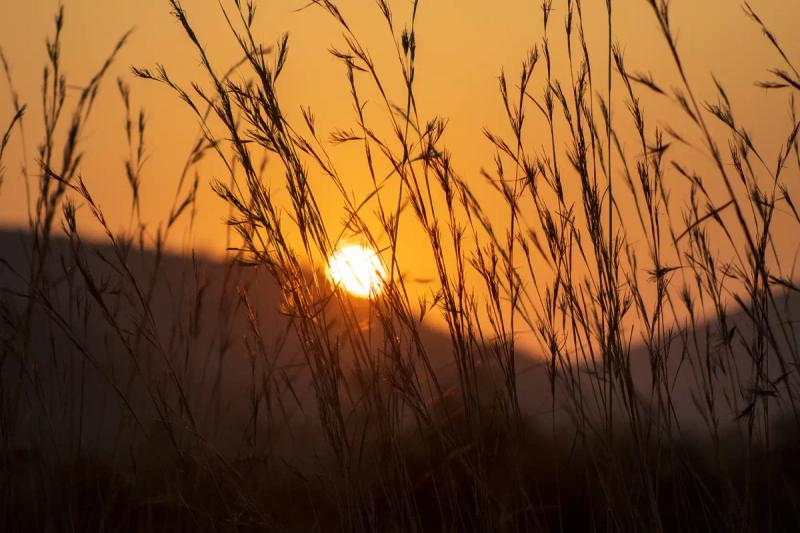
Once back inside Berg-en-Dal, we walked part of the Rhino Walk trail that borders the entire rest camp. Along the route, there are information plaques, mostly geared towards children, in the format of Did You Know? questions and guessing games. The trail is beautiful, with a fence looking down into a dried up river bed - or, perhaps, it was a ditch - and trees on the other side. On our walk back, through the bushes and on the other side of the fence, I spotted a hippo plodding along, it's big round belly swaying as it walked.
While our night was comfortable and the facilities were more modern and luxurious than at Satara, we preferred the more rustic and laidback atmosphere that the cat camp offered. After waking up early and enjoying a sleepy (on our part) albeit exciting game drive, we had our final meal. As we finished, a grysbok and her baby crept their way onto our stoop. The mother came right up to our table, sniffing for crumbs. As tempting as it was, we didn't reach out to stroke her and instead marveled at her proximity and comfort around us.
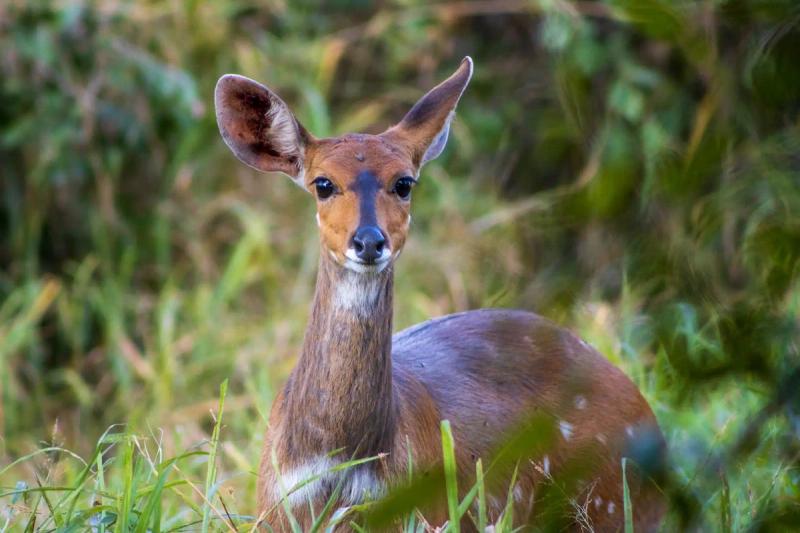
Exploring the Kruger from Berg-en-Dal
Self-drive Safari
S110 loop
Quickly, before the gates closed for the night, we decided to make the 4 kilometre journey to the Matjulu watering hole were we hoped we'd find either rhinos or wild dogs, both of which were known to roam the area. We saw neither but did spot several elephants to and from the watering hole.
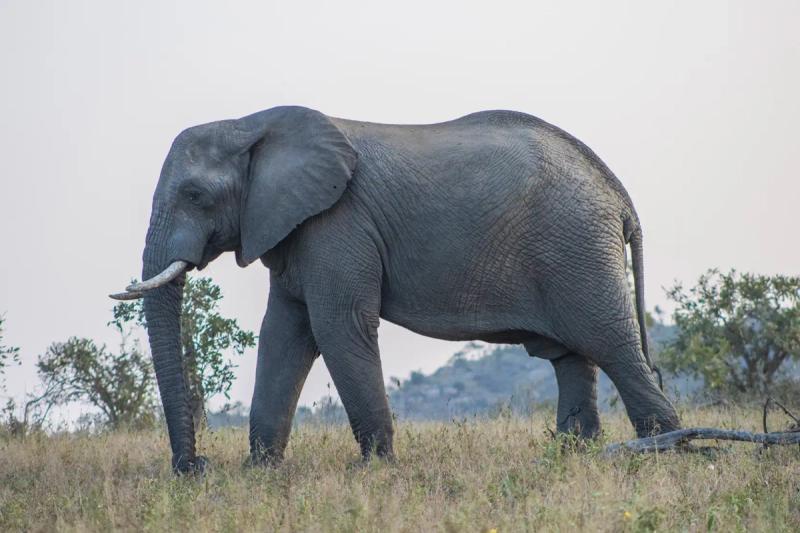
We stayed there, watching the sun get low and the birds come to life. Several tiny red and blue birds hopped about on the ground, searching for invisible morsels. We were mesmerised by the beautifully plumed white-fronted bee-eater. While not as majestic as the fish eagle, it quickly became one of my favourite bird sightings from our Kruger stay.
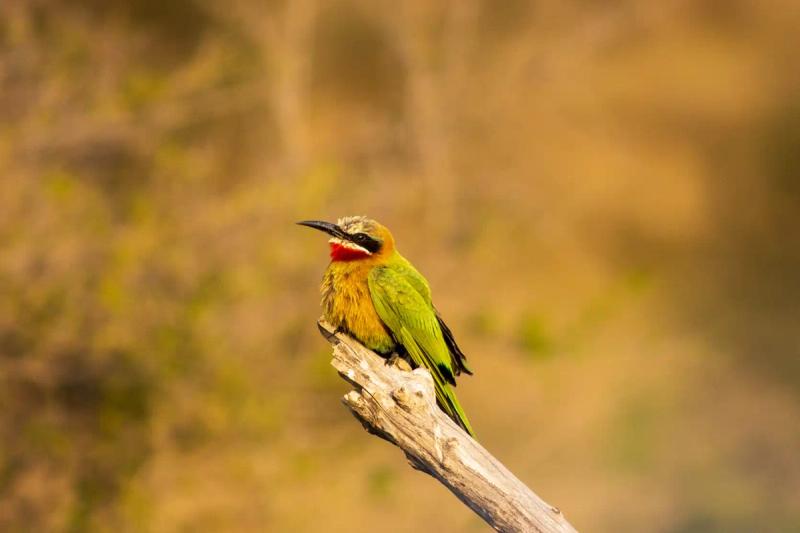
Had we had more time, we would have visited the nearby Gardenia Hide. We found the hides to be a rewarding spot to stretch our legs while still indulging in all the wildlife that surrounded us. Something we might factor in a bit more on our next trip.
The Kruger Explorer App
While I was initially doubtful of how helpful the app would be, I was blown away. While we didn't use the offline map, we followed a few of their suggested routes, read up about the areas we were visiting (and the animals we sighted) and used the general Southern Kruger map to help us find our way around. The general map was really detailed and let us plan a few detours and take spontaneous ones when time allowed.
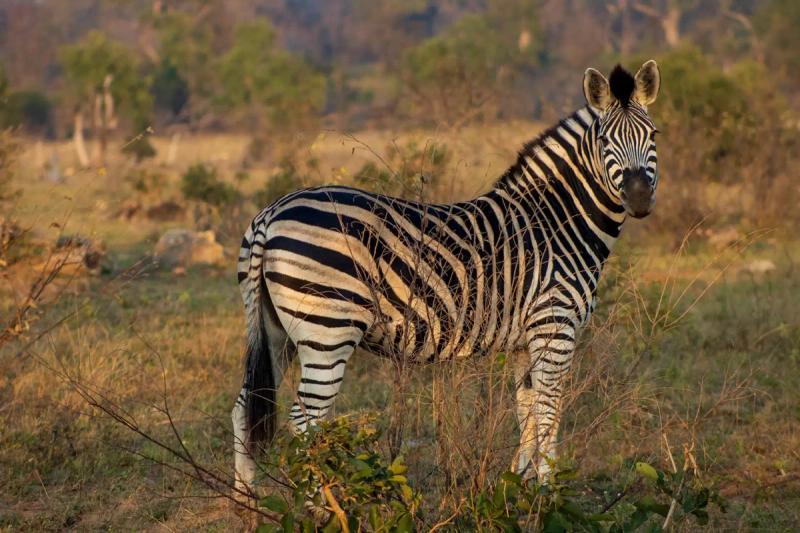
I garnered great satisfaction in ticking off each sighting as they were made. The best part of the app was the list of animals - reptiles, mammals, birds and (the one we used the least) invertebrates. Each entry comes with pictures and information about the animal. This made it easier for us to check off the different birds we saw, and there were plenty! It also meant we know far more about the animals we greedily gobbled with our eyes than we would have otherwise.
R200 bucks for lifetime access? Before going to the Kruger that seemed like a lot. Having used the app on location, I can assure you, it's a bargain.
Sunrise Safari
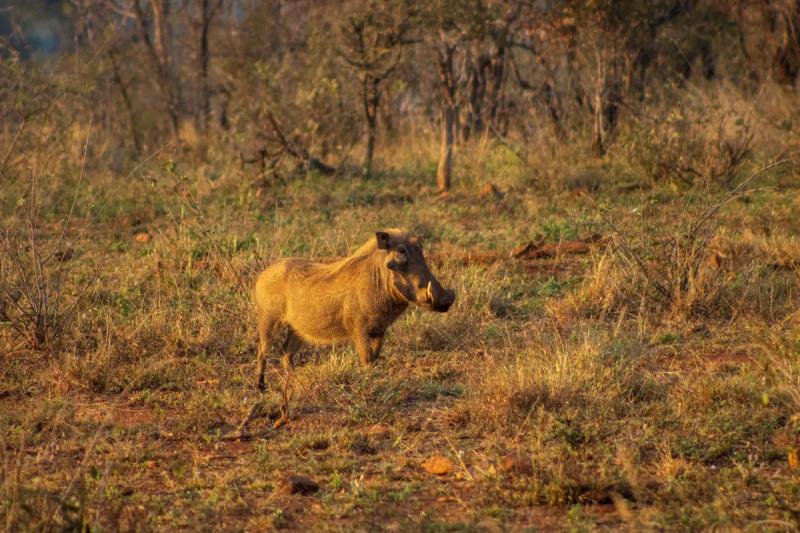
Before packing up our rental car, bidding adieu to the Kruger and heading back to the airport, we had one last 4.30am hoorah in the form of the sunrise safari. We didn't see any cats but early on we saw a hippo dashing into the thick vegetation, and once again, we were surprised by how fast it was for an animal of its size.
We kept our eyes peeled, hoping to see the last of the Big Five, when our driver pulled over. She pointed far into the distance where supposedly a black rhino was on the trot. I may have caught a glimpse of it but not enough to assure me that my mind wasn't simply playing tricks on me considering my lack of sleep the previous night. We drove on, hoping desperately to get another chance to see a rhino or a leopard.
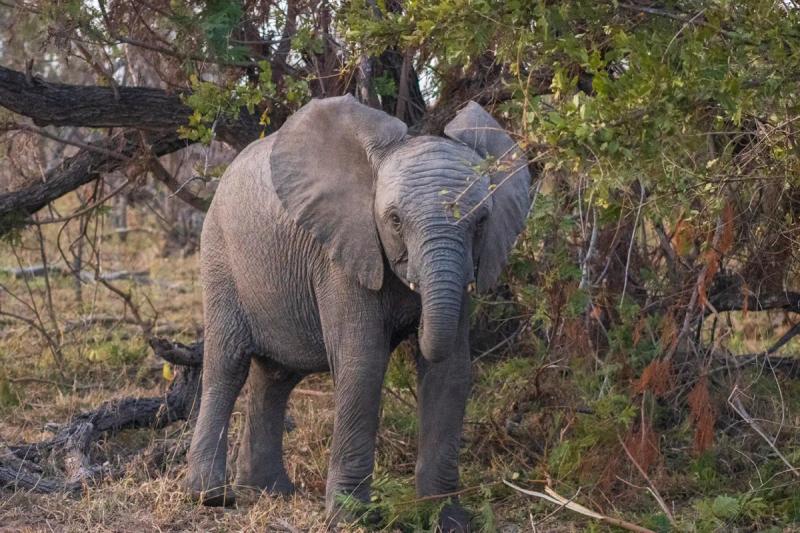
Around a corner, on the other side of a valley, a white rhino and its baby were spotted. They were barely more than specks on the horizon and hard to see without some form of focal enhancers - thank you zoom lens and binoculars! As our time on the sunrise safari was drawing to a close, and with lots of buck under our belts, we began to lose hope for a really great sighting. We saw a few more elephants and warthog trotting into the sunlight.
Then, as the sun brushed the long grass alongside the road, the great boulder up ahead twitched. Not a boulder after all but two lazy rhinos enjoying their morning sunbathing session. They were less than 50 metres away. We oohed and aahed for ten minutes, soaking up the sight before finally returning to the rest camp.
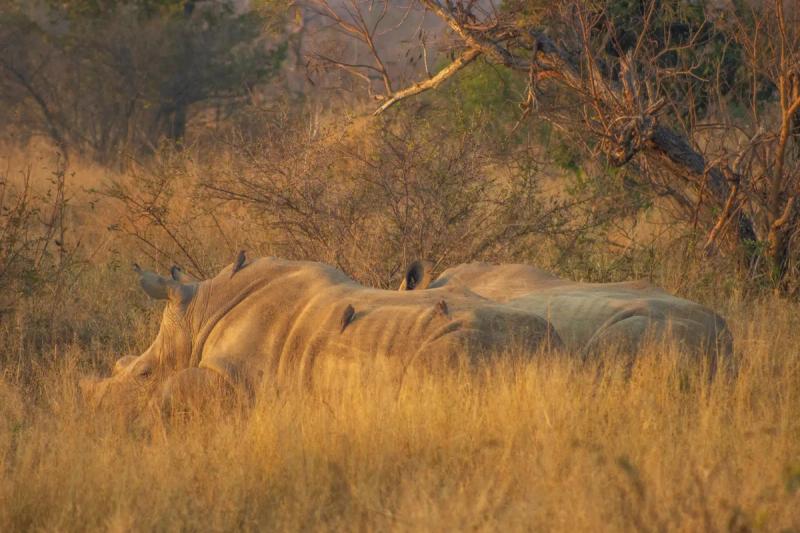
So we never did see the elusive leopard, but we were thrilled with what we had seen and vowed to come back.
